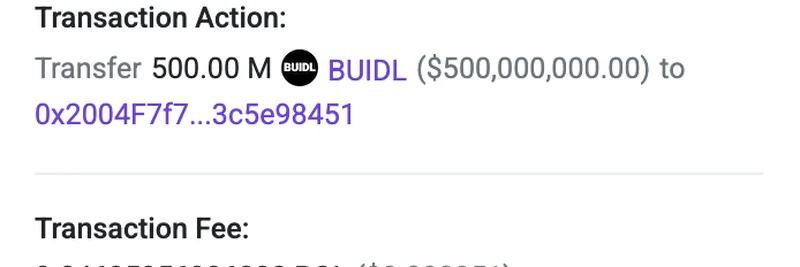Hey there, meme enthusiasts and blockchain builders! If you're deep into the world of meme tokens on BNB Chain, you've probably heard the buzz about oracles and real-world data feeds. Well, things just got a whole lot more interesting. BNB Chain has teamed up with Chainlink to integrate official US economic data right onto the blockchain. This isn't just tech jargon—it's a game-changer that could supercharge your favorite meme projects. Let's break it down step by step, keeping it simple and straightforward.
What’s the Big Deal with This Collaboration?
Chainlink, the go-to oracle network for feeding real-world data into smart contracts, has joined hands with BNB Chain (that's the rebranded Binance Smart Chain, known for its low fees and fast transactions). The goal? To stream verified data from the US Bureau of Economic Analysis (BEA) directly on-chain using Chainlink's Price Feeds. Think of Price Feeds as secure pipelines that deliver tamper-proof info to blockchain apps.
This means developers on BNB Chain can now tap into key US economic metrics without relying on shaky third-party sources or estimates. The data comes straight from the government, aggregated securely, and updated in real-time. It's like giving your smart contracts a direct line to Wall Street's pulse, but decentralized and trustworthy.
For context, BNB Chain is a hotspot for meme tokens—projects like those playful dog-themed coins or viral community-driven assets thrive here due to the chain's accessibility and vibrant ecosystem. Chainlink's role as an oracle ensures that when these projects need external data (like prices or events), it's accurate and manipulation-resistant.
Key US Economic Data Now Available On-Chain
So, what exactly is being brought on-chain? The integration focuses on three major indicators from the BEA:
Gross Domestic Product (GDP): This tracks the overall health and growth of the US economy. Imagine meme tokens that react to GDP spikes—maybe a "Bull Market Doge" that pumps rewards when growth is strong.
Personal Consumption Expenditures (PCE) Price Index: A key measure of inflation, preferred by the Federal Reserve over CPI. For meme creators, this could inspire inflation-linked tokens where holders get adjusted yields based on real inflation trends, adding a layer of economic satire or utility.
Real Final Sales to Private Domestic Purchasers: This gauges private sector spending and activity, stripping out government influences. It's perfect for building apps that respond to consumer behavior, like meme-based betting pools on economic recoveries.
These aren't just numbers; they're delivered via Chainlink's secure aggregation, meaning no single point of failure. Smart contracts can query them automatically, enabling apps to react instantly to economic shifts.
How This Powers Up Meme Tokens and DeFi on BNB Chain
Meme tokens aren't just about hype and community—they're evolving into sophisticated plays with DeFi elements. This new data integration opens up exciting possibilities:
Inflation-Adjusted Meme Assets: Picture a meme token that auto-adjusts its supply or rewards based on PCE data. If inflation rises, maybe it burns tokens to mimic "hedging" in a fun, meme-y way. This adds real utility, attracting more holders and boosting SEO terms like "inflation-proof meme coins."
Prediction Markets with a Meme Twist: Prediction markets let users bet on outcomes, and now they can use official US data as the oracle. Meme communities could create markets like "Will GDP beat expectations?" with viral themes, turning economic news into engaging, gamified experiences. Tools like this could drive massive engagement on BNB Chain, where transaction costs are pennies.
Risk Management for Meme DeFi: Many meme projects dip into lending, staking, or yield farming. With on-chain economic data, protocols can dynamically adjust parameters—like increasing collateral requirements during GDP dips—to reduce risks. This makes meme DeFi more robust, appealing to serious investors while keeping the fun factor.
Tokenized Real-World Assets (RWAs) with Meme Flair: The article highlights how this supports tokenizing assets like mutual funds or securities. For memes, think tokenized "economic memes"—assets backed by GDP trends or inflation indexes, wrapped in humorous narratives. Franklin Templeton's expansion to BNB Chain, managing over $700 million in on-chain assets, shows institutional interest is growing, which could spill over to meme ecosystems.
Plus, Chainlink's recent work with Swift (the global banking network) means easier integration for traditional finance, potentially bringing more liquidity to BNB Chain's meme scene.
Future Implications for the Meme Token Ecosystem
Looking ahead, this partnership positions BNB Chain as a leader in blending real-world data with blockchain fun. For meme token creators, it's an invitation to innovate beyond pumps and dumps—build projects that educate on economics while entertaining. Imagine meme DAOs using GDP data to vote on treasury allocations, or viral challenges tied to PCE updates.
This also ties into broader trends like tokenized RWAs and institutional adoption. As more data comes on-chain, meme tokens could evolve into "edutainment" tools, teaching users about finance through memes. For blockchain practitioners, it's a rich knowledge base addition: reliable data feeds mean better-built apps, fewer exploits, and more sustainable growth.
If you're building on BNB Chain, head over to Chainlink's docs or BNB Chain's developer resources to get started. And keep an eye on updates—this is just the beginning of on-chain economics meeting meme culture.
What do you think? Will this spark the next wave of smart memes? Drop your thoughts in the comments, and stay tuned to Meme Insider for more on how tech like this shapes the meme token world.

